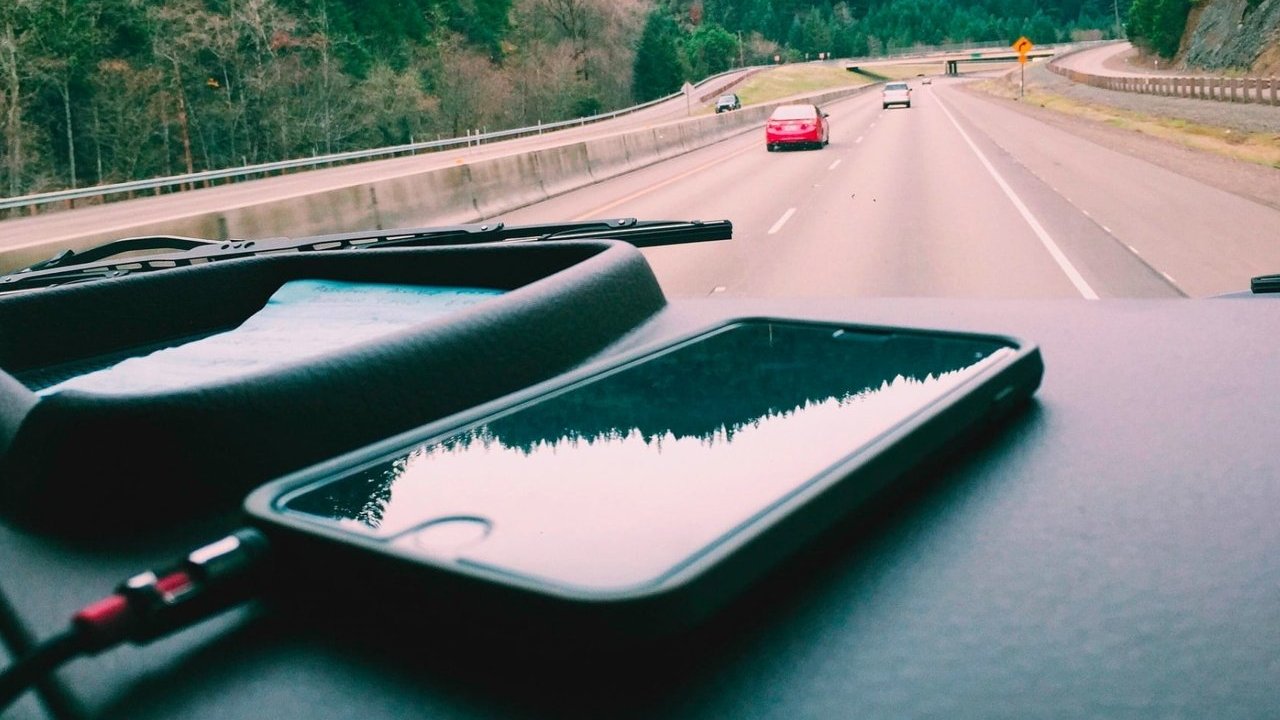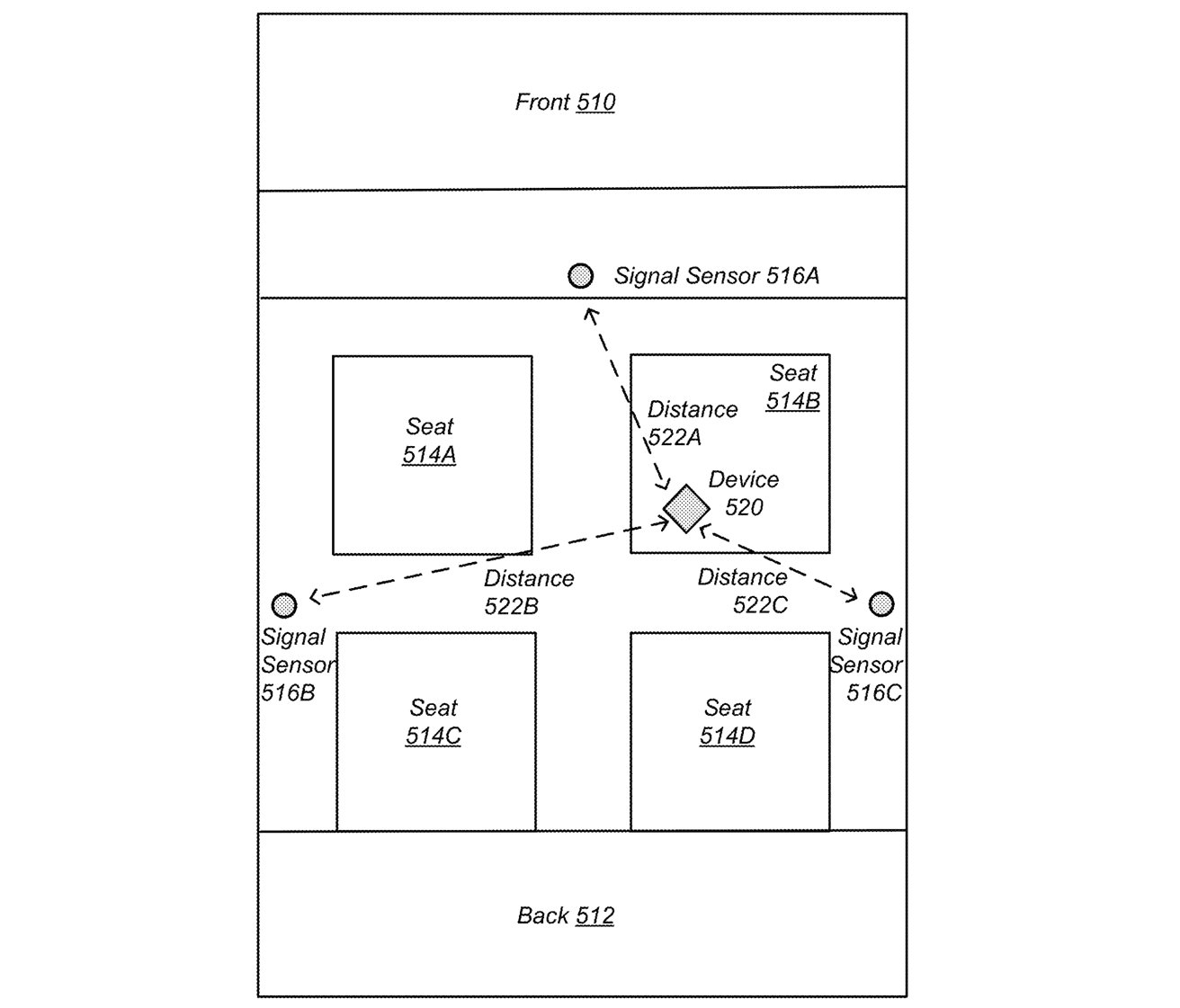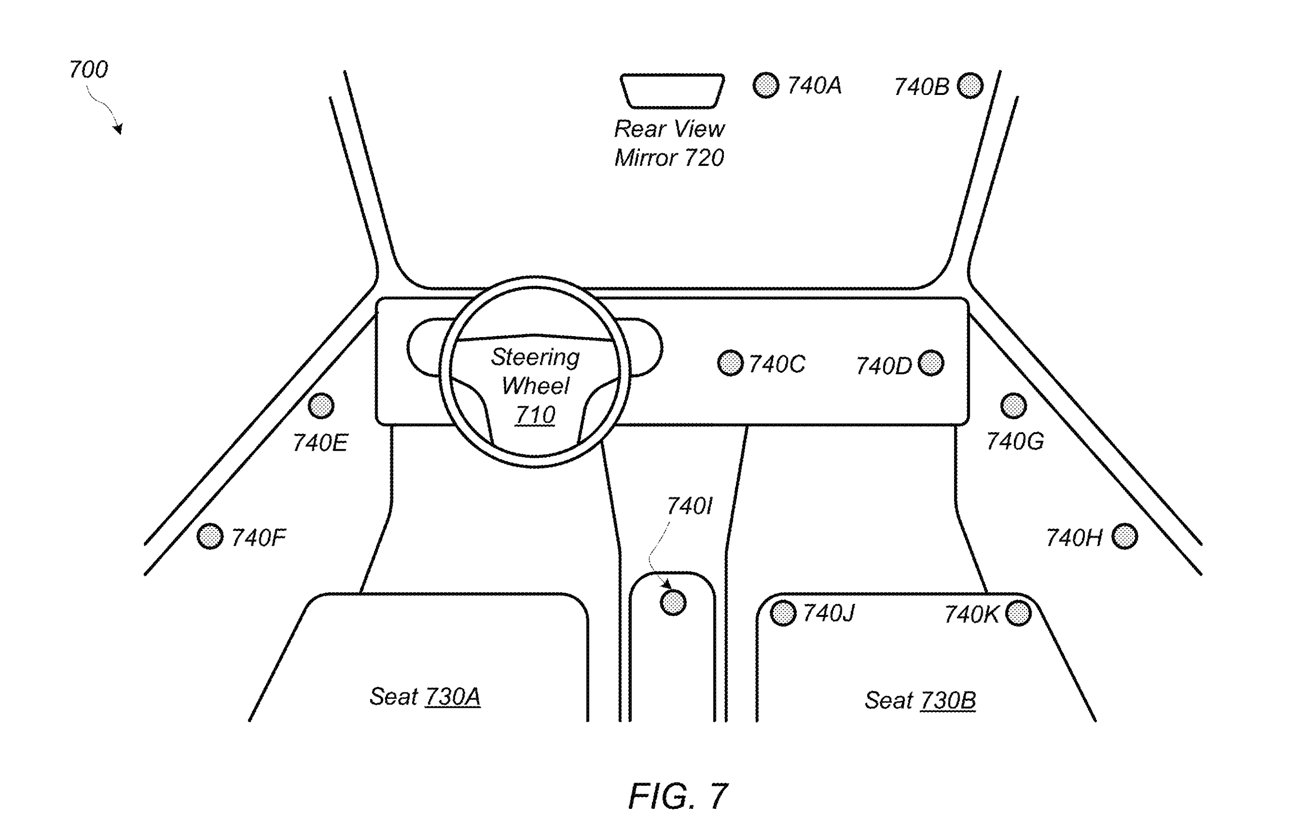Apple Car may help find your lost iPhone under the seat
The Apple Car could help drivers and passengers work out where they dropped their iPhone within the vehicle using the car's vibrations, with the same system potentially allowing an iPhone to be used as an in-vehicle remote control.
It is inevitable that at some point, the average iPhone user will have accidentally dropped their device in a car when they are a passenger. While it may fall into a place that's easily visible and reachable from the seat, there's a chance that the device will slide under seats and into different places within the vehicle cabin, making it harder to locate.
There's got to be someone at Apple who keeps doing this, because not only has the company now applied for a patent for a solution, it's done so before. And had that patent granted.
In this newly revealed subsequent patent re-application, still called "Systems and methods for locating mobile devices within a vehicle," Apple outlines methods that could be employed to work out where an iPhone is located within the vehicle.
More difficult than it sounds
For a start, Find My doesn't use UWB to track down iPhones and iPads at this time. Find My instead relies on GPS and other technologies that narrow down the position to a few feet, which will basically tell users the iPhone is in the car, rather than exactly where it is in the vehicle.
Look under the floor mats, that's a tip. Or have a second iPhone so you can find the first one.
Or perhaps be careful to only lose your iPhone inside an Apple Car. One of Apple's most plausible methods for finding a lost phone in there involves use of multiple signal generators and sensors spread out throughout the vehicle.
These can be used in tandem with a signal generator and sensors built into the mobile device to detect its position.
The signal generation can use various technologies, including infrared, Wi-Fi, Bluetooth, and audio chirps.
By detecting how the signal generators interact with the sensors, the system could work out if the device is closer to some generator locations than others. By processing the sensor data, such as with time-of-flight calculations, as well as taking into account the car furnishings that could impact signals, the system could determine the position of the mobile device.
It is also reasoned the mobile device could also work out its position using its own sensors and the signal generators, as well as knowledge of the interior of the vehicle.
Apple also suggests that the use of Inertial Measurement Units, or IMUs, could do a similar job. The IMUs continuously collect motion data when the vehicle is moving, which is then collected and analyzed by the car's computer.
Rigid body motion calculations could be used, though the same IMU system could use vibrational movement of a vehicle in motion to locate objects as well, by detecting unusual vibration patterns. Where these differences occur, an object is likely to be located.
It is also feasible that an IMU component in the mobile device could also be employed to detect low-level vibrations. This data could be transmitted to the onboard computer, and again can be used to work out its location.
To assist with IMU-based detection, specific parts of the vehicle could be designed to exhibit special kinds of vibrations, enabling a variety of vibrations to be detected and analyzed. In the case of the phone-based IMU, such a method could more immediately alert a driver to their iPhone being kept in the trunk or another internal compartment.
A third and more conventional method is offered in the form of using a vehicle's cameras. By using imaging data along with a 3D model of the vehicle's cabin, the image processing system may be able to see items in the cabin that don't match the model.
Though using cameras may not provide adequate coverage of everywhere in a vehicle, Apple suggests it could be used to provide an initial visual sweep of a vehicle before employing other search methodologies.
A system for device location could be used in other ways. One example given in the patent is that it could be used as a remote control, such as enabling a passenger at the back of the vehicle to control electric windows on the opposite side of the cabin, assisted by knowing the orientation and position of the device.
A cab or bus may determine a mobile device is left behind, which could prompt an alert to the passenger before they have travelled too far away to be uncontactable.
On a plane, the system could track down passengers as they move about, ensuring passengers are sat in their respective seats at takeoff or landing.
The patent was originally filed on January 31, 2020, and lists its inventors as Sawyer I. Cohen, Jack J. Wanderman, Romain A. Teil, and Scott M. Herz.
Apple files numerous patent applications on a weekly basis, but while the existence of a patent indicates areas of interest for Apple's research and development teams, they do not guarantee the existence of the idea in a future product or service.
While not strictly in-car device location, Apple already has its CarKey API that allows for an iPhone to replace the keys of a vehicle. This currently relies on NFC, which means the iPhone has to be in close proximity to specific areas of the vehicle, but that could change.
 Malcolm Owen
Malcolm Owen














 William Gallagher and Mike Wuerthele
William Gallagher and Mike Wuerthele
 Christine McKee
Christine McKee
 William Gallagher
William Gallagher

 Marko Zivkovic
Marko Zivkovic







